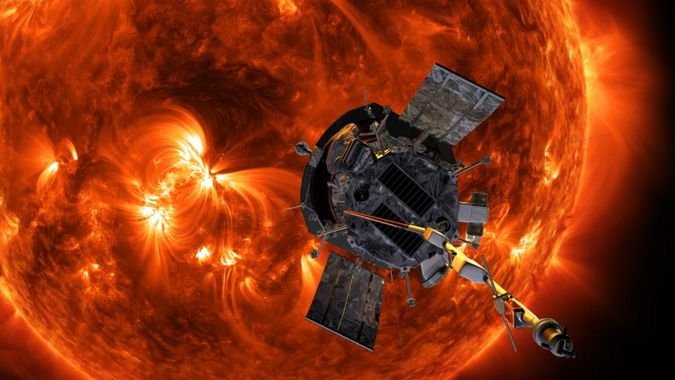The space probe Parker is the one which got the closest to a star and was released the first image.
Source: Universe Today
It’s been 124 days since the Parker Solar Probe was launched, and several weeks since it made the closest approach any spacecraft has ever made to a star. Now, scientists are getting the hands on the data from the close approach. Four researchers at the recent meeting of the American Geophysical Union in Washington, D.C. shared what they hope they can learn from the probe. They hope that data from the Parker Solar Probe will help them answer decades-old question about the Sun, its corona, and the solar wind.
The excitement is all around the PSP’s first solar encounter phase. From Oct. 31 to Nov. 11, 2018, Parker Solar Probe completed the first solar encounter phase, speeding through the Sun’s outer atmosphere — the corona — and collecting unprecedented data with four suites of cutting-edge instruments. The PSP will orbit the Sun 24 times, for 24 solar encounter phases. During the mission, the probe will use 7 Venus gravity-assist fly-bys to incrementally shrink its orbit around the Sun.
What is fly-by? Is the path followed by a probe or spaceship through a celestial body to collect information about that body.

Each solar encounter phase occurs when the probe is within .25 AU of the Sun, and during those times the science instruments will collect data. The probe will be exposed to extreme heat and radiation during that time, and can’t communicate. Only once it exits each phase can it send its data back to Earth for heliophysicists to ponder.
This is the imagem of corona taken by the probe.

Source: NASA
When the PSP mission was designed, scientists wanted to address three important questions regarding heliophysics:
- How is the Sun’s outer atmosphere, the corona, heated to temperatures about 300 times higher than the visible surface below?
- How is the solar wind accelerated so quickly to the high speeds we observe?
- How do some of the Sun’s most energetic particles rocket away from the Sun at more than half the speed of light?
With the Parker probe, can understand better solar flare and coronal mass ejection. These phenomena have already been described here in the site. Click in the buttons to read the post.
Coronal mass ejectionClick here



